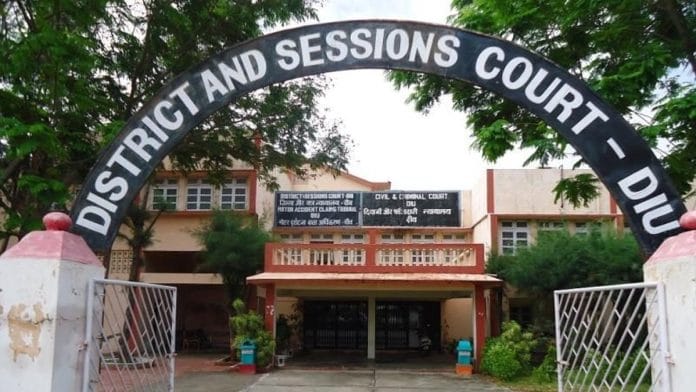New Delhi: In an effort to reduce workload for courts, a mechanism is being developed to encourage out-of-court mediation. The National Legal Services Authority (NALSA), in collaboration with the Supreme Court’s Mediation and Conciliation Project Committee (MCPC), is developing a module to promote community mediation with the objective to encourage citizens to opt for this dispute resolution mechanism instead of choosing the litigation route.
To start with, the two bodies are currently working on a programme to train mediators in villages. According to people aware of this move, NALSA proposes to approach all gram panchayats and ask them to identify and nominate respected persons from their villages who are willing to be trained as mediators.
These neutral persons, who would be trained to acquire negotiating skills to resolve disputes amicably at the pre-litigation stage, would not be politically aligned individuals, but preferably those who have retired from government jobs such as teaching or defence services.
The training module that is in the process of being developed would be prepared in all regional languages as the programme aims to cover all villages in the country. A committee headed by a retired District Judge of Delhi has been assigned to prepare the training capsule.
A similar project would be developed later to popularise community mediation at the district level.
Community mediation is one of the facets of the Mediation Act, 2023, that was introduced to codify and formalise mediation, which has emerged as a successful alternative dispute redressal (ADR) mechanism to settle disputes amicably.
Before the Parliamentary legislation was introduced, mediation was practised under section 89 of the Civil Procedure Code (CPC), with courts referring cases to court-annexed mediation centres for settlement. Section 89 was inserted in 1999 to give legal recognition to extra-judicial settlements through participation of parties in ADR, including mediation. This was done to alleviate the burden on courts and enable speedy resolution of disputes.
Following a Supreme Court judgement in 2010, mediation emerged as a successful ADR mechanism. This verdict had outlined guidelines on what kind of cases can be referred for mediation. It drew an illustrative list of cases and extolled the virtues of mediation in the legal sector, while hailing it as a meaningful ADR mechanism.
As per the law, mediation can only be suggested if the parties agree to an amicable settlement. The procedure allows either of the disputants to withdraw from the mediation process and go back to the court to pursue litigation.
“Litigations are not averse to mediation and have willingly participated in it, resulting in successful resolution of complex cases, particularly those that arose from soured family relations,” said the officer quoted above.
However, mediation has remained restricted to metropolitan cities and its benefits have not reached the districts and villages where there is a spurt in litigation.
When Supreme Court judge Justice Suryakant took over as chairman of NALSA and MCPC two months ago, he held discussions with officials to build awareness on mediation, particularly community mediation.
“Justice Suryakant noticed that people fighting cases in the top court were ready to settle their disputes through mediation. He, therefore, felt that if the culture of mediation spreads at the district and village level then the docket explosion can be curbed. That’s how the idea of informing citizens about community mediation was explored,” another officer working on the project said.
Since the objective behind promoting community mediation is to reduce the institution of fresh cases in villages and districts, Justice Suryakant suggested that the programme be devised in such a way that mediation is not showcased as an ADR, but a parallel dispute resolution mechanism.
“If you project mediation as an ADR, people will continue to live with the idea that the traditional court litigation is the principal dispute settlement process. However, we want to break this myth and highlight mediation as an independent mechanism that can be opted for settlement outside the court or even before the start of the litigation,” the second officer mentioned above added.
In another significant move, NALSA and MCPC will hold a 90-day all-India mediation campaign wherein cases from taluka-level courts up to the Supreme Court will be referred for mediation everyday, subject to the consent of parties involved in the dispute. The campaign will start on 1 July and end on 30 September.
An academic exercise will also be undertaken simultaneously to analyse the impact of the settlements carried out on the judicial system. This will be the first time that such a study will be conducted on mediation.
“In mediation, a bulk of cases are either matrimonial disputes, cheque bouncing cases or insurance matters. During this campaign, courts have been told to refer other kinds of cases such as disputes between neigbours, inheritance cases, mutation matters. A critical and objective evaluation of the exercise will be carried out by the National Judicial Academy, Bhopal, which has been given a free hand to choose a National Law University to work with it,” the officer said.
(Edited by Viny Mishra)
Also read: ‘Tareekh pe tareekh’ is not it. Here’s why India’s district courts are staring at massive pendency






